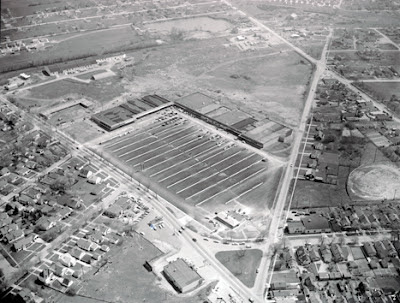The First Congregational Church was built in 1895 by George Philip Feick in the Romanesque Revival style of architecture. Tiffany glass is featured in this two story church, located at 431 Columbus Avenue.
George Feick was also the builder of Zion Lutheran Church, built in 1898-1899 at the southwest corner of Columbus Avenue and Jefferson Street. The church was built from limestone in the Victorian Romanesque style. Many early German immigrants worshipped at this church, whose congregation formed in 1847. Well into the twentieth century, there was a German language service held here every Sunday. Zion Lutheran Church served as a mother church for several other Lutheran churches in the area.
Visit the Sandusky Library Archives Research Center to learn more about these and several other area churches. In the Church Collections of the Archives Research Center are many vintage photographs, church histories, and church records on microfilm.

 this blog
this blog






























